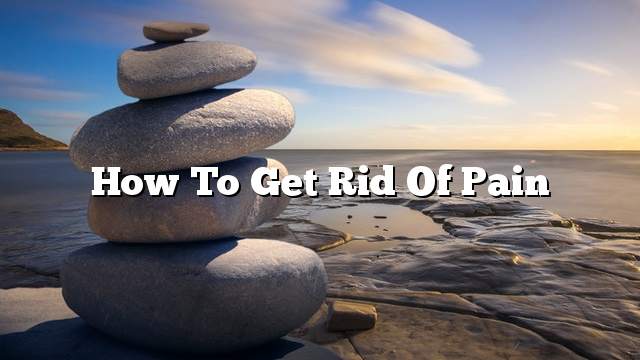Pain is a message from the body to the brain indicating that there is a disease, a wound or a harsh activity that has caused a problem in an area. Without pain, you will remain oblivious to many problems of cut ligaments to appendicitis until the problem becomes serious. At a low level, the pain can motivate you to relax the affected area. So the tissue can be repaired and additional damage can be prevented when the pain is severe, the pain motivates you to seek treatment as well
However, it is not necessary for each pain to have a useful function. Acute pain can alert us to a problem that needs immediate attention, while in some cases the pain persists long after the affected area heals.
Sometimes other pain comes from recurrent back pain, migraines and other types of headaches, arthritis and other problems.
It is referred to as chronic pain, which is known as pain that occurs on a continuous basis or comes to an interval of less than six months. This pain can cause a continuous problem that can not be alleviated through treatment. In this case, the control of pain often becomes the goal of treatment.
In some people the control of pain often becomes the goal of treatment. When some people have pain periodically and lead to tension and tension this increases pain. Fear and expectation of physical problems can increase pain and lead to feelings of depression and despair. When a person is exposed to such pain.
It is normal to limit its activities and this can lead to the cycle of chronic pain, which can adversely affect the confidence of the individual self-esteem and self-esteem. When you are attuned to the chronic pain cycle and are also aware of its psychological effects, this can help you avoid getting into it:
1) The cycle often begins with long periods of rest and inactivity causing a decrease in physical physical strength, stability and flexibility. As a result, you can begin to lose confidence in your ability to perform things, resulting in low personal goals
2) Being unable to perform normal activities at home or work seems to increase frustration is likely to begin to accept yourself as a nonproductive person and this sense of diminished self-esteem can later lead to depression
3) During times when the pain is gone or becomes more likely than usual, you can strain yourself to do business to prove to yourself and others that you can still perform the tasks you performed before the chronic pain cycle
4) As a result of excessive stress, the pain often returns and perhaps more severe than before, and you may find yourself unable to finish work or achieve goals and because of weakness of determination and during pain, you start to reduce your activities and start the second session
One way to keep prisoners from falling into a chronic pain cycle is by controlling pain. Often, reducing physical pain can prevent the cycle from starting. There are many treatments that can help relieve pain. Some do this at a purely physical level, perhaps by disrupting the pain process or removing the sensation from the end of the nerves. And some of them achieve the pain at the psychological level by affecting the perception of the mind of pain. However, in the treatment of pain, there is often no boundary between the physical and mental levels. Just relieving physical pain may reduce tension and a good outlook on life. The mind can also be used to relax muscles and influence physical changes that can reduce symptoms.
